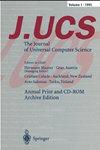知觉学习模块(PLM)在CS1中的负面结果和方法论警告
IF 0.7
4区 计算机科学
Q4 COMPUTER SCIENCE, SOFTWARE ENGINEERING
引用次数: 0
摘要
感知学习模块(PLMs)是基于多项选择问卷的感知学习的一种变体。PLMs在数学和飞行训练中的应用已有成功的研究。在编程入门课程(CS1)中设计和采用plm的可能性仍然是一个开放的研究领域。本研究的目的是测试接受过PLM培训的学生在识别程序片段方面是否会在编写程序方面表现更好。对学生进行了两项PLM干预。第一个干预是一个非随机对照实验,其中学生选择回答PLM问卷(N=40),而对照组由不回答的学生组成(N=629)。第二个干预是随机对照实验,使用安慰剂,其中学生被随机分配执行PLM问卷(N=51)或另一个安慰剂活动(N=51)。对第一次实验结果的不同形式的分析得出Cohen& s d在0.23到0.34之间,支持PLM干预。对于第二个实验,对PLM干预的效应量为d = -0.11,但两个结果都是显著的。我们认为,谨慎的结论是,使用PLM活动作为CS1课程的一部分是无效的。由于所使用的方法决定和技术,该论文也引起了人们的兴趣。本文章由计算机程序翻译,如有差异,请以英文原文为准。
Perceptual Learning Modules (PLM) in CS1: a Negative Result and a Methodological Warning
Perceptual Learning Modules (PLMs) is a variation of Perceptual Learning based on multiple-choice questionnaires. There exists successful research of the use of PLMs in math and flight training. The possibility of designing and adopting PLMs in Introductory Programming Courses (CS1) is still an open area of study. The goal of this study is to test whether students that received a PLM training on recognising segments of programs will perform better at writing programs. Two PLM interventions were administered to students. The first intervention was a nonrandom controlled experiment, in which students opted to answer the PLM questionnaire (N=40), while the control group consisted of students that did not answer it (N=629). The second intervention was a randomized controlled experiment with a placebo, in which students were randomly assigned to perform either the PLM questionnaire (N=51) or another a placebo activity (N=51). The different forms of analysis of the first experiment results yielded Cohen’s d ranging from 0.23 to 0.34 in favor of the PLM intervention. For the second experiment, the effect size was d = -0.11 against the PLM intervention, but the two results were significant. We believe that the cautious conclusion is that there is a null effect in using a PLM activity as part of a CS1 course. The paper is also of interest because of the methodological decisions and techniques used.
求助全文
通过发布文献求助,成功后即可免费获取论文全文。
去求助
来源期刊

Journal of Universal Computer Science
工程技术-计算机:理论方法
CiteScore
2.70
自引率
0.00%
发文量
58
审稿时长
4-8 weeks
期刊介绍:
J.UCS - The Journal of Universal Computer Science - is a high-quality electronic publication that deals with all aspects of computer science. J.UCS has been appearing monthly since 1995 and is thus one of the oldest electronic journals with uninterrupted publication since its foundation.
 求助内容:
求助内容: 应助结果提醒方式:
应助结果提醒方式:


